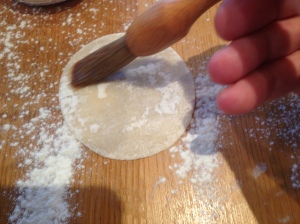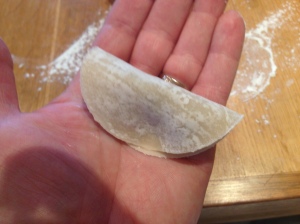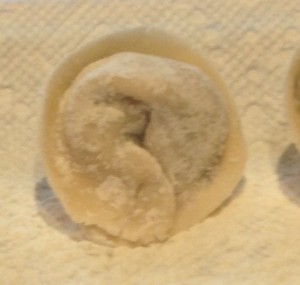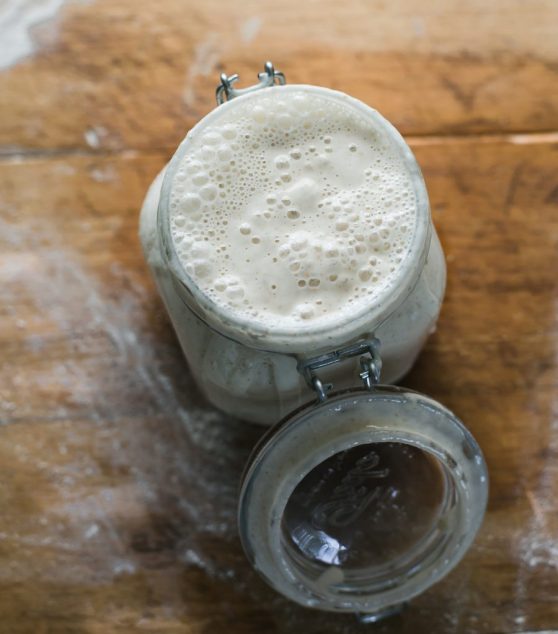“I’m making the sequel to Emanuelle. I call it Temple Emanuelle. Actually it’s not dirty at all, it’s just a lot of kissing and mezzuzas. And er, one singular sub-plot, in which a woman who has an unnatural relationship with a Kreplach. I know there must be one or two of you out there, who haven’t got the vaguest idea what the hell is a Kreplach. And to both of you I say … A Kreplach is a person from Kreplachia, which is a very small fishing nation wedged between Estonia and Latvia. You don’t hear from them too much since the iron curtain fell! But every now and again, one or two Kreplach’s manage to escape … but NEVER to Cleveland!”
Bette Midler, “Live at Last“
I think that was the first time in my life that I ever heard word kreplach mentioned. This was back in the late 70s, in my friend Pierre’s living room. We were listening to The Divine Miss M’s latest album, which, in my opinion, was her finest. As far as I’m concerned, it was pretty much downhill for her once Beaches was released.
But I digress. A kreplach (as I make them, anyway), is actually a dumpling stuffed with a mixture of ground beef, chicken, onions sautéed in schmaltz, and maybe some parsley. They look very much like the tortellini of Italian cuisine, though they are generally larger. They are most often served in chicken soup, though they’re sometimes fried. Their deliciousness is proportionate to the trouble involved in making them, which is why I suppose they are considered the most elegant thing to serve in Jewish chicken soup. You can buy them at some Jewish delis, fresh or frozen. But if you’re like me, when you still have lots of chicken soup in the fridge, and the weather is crappy enough to prevent you from going out, and the only other thing you can think of doing to occupy your time is the ironing, you might consider making some. If done entirely from scratch, it’s quite time consuming; but you can cheat, as I did, buy opting for store-bought dough for the kreplach. All in, you’re looking at about an hour of time, perhaps less.
The recipe I use is adapted from Robert Sternberg’s Yiddish Cuisine, which, if can have only one book on Jewish food, should be the book you choose.
Here’s what you need:
- 1 tablespoon schmaltz. If you read my chicken soup post, you’ll know that schmaltz is worth it’s weight it gold. If you don’t have any, use a neutral-tasting vegetable oil. But the end result won’t be quite the same.
- ½ cup finely minced onion
- ¼ pound of lean ground beef
- ½ cup of finely chopped (or ground) cooked chicken
- 1 teaspoon finely minced parsley (I didn’t have any fresh parsley for some reason, so I used a large pinch of chervil, an herb I happened to have in my pantry that I use about once every two years. It worked well.)
- Round dumpling or wonton wrappers
- A pastry brush
- A glass of cold water
Here’s what you do:
- Put the schmaltz into a 10″ skillet, and place over a medium flame.
- When the fat has melted, add the onion, and give the pan a shake to coat the onion with the fat. Sauté the onion for a few minutes, until it turns translucent.
- Add the beef, and break it up with a fork. Cook the beef until it loses it’s raw colour.
- Remove from the heat, then add the chicken and parsley, and add salt and pepper to taste. Give it a good stir and set it aside.
- Grab about 12-18 of the wonton wrappers, and re-wrap the rest and put them in the fridge. (They will dry out and become useless if you don’t.) Set up a space to assemble the kreplach, such as your kitchen table.

Ready to start putting the kreplach together with my faithful assistant, Hudson.
- Now, the wrappers I had were fairly dry, and fairly heavily coated with flour or cornstarch. I found they needed to be moistened so that they would behave properly (i.e. so that the dumplings could be sealed and shaped). So, before filling each wrapper, a painted the perimeter of each wrapper with a pastry brush that had been dipped in water. This moistened and softened the dough somewhat.

Dampening the dough
- Scoop up a teaspoonful of the meat mixture and transfer it neatly into the centre of the circle of dough:

Make sure there is a half-inch border of dough all the way around without any filling touching it; if the filling spilled into this border, use your pastry brush to sweep it into the centre, otherwise, you will have a hard time sealing your kreplach.
- With the dough circle in front to you, pick up the edge of it at the 12 o’clock point on the circle, lift it up, and over until the 12 o’clock point meets the 6 o’clock point, and pinch 12 and 6 o’clock together:

- Now, pinch the edges of the dough together firmly from 6 o’clock to 3 o’clock, and then from 6 o’clock to 9 o’clock. It’s critical that the edges seal tightly; you might need to go over the seam two or three times to make sure it’s well sealed.
- If your dough is on the dry side, as mine was, dab the 9 o’clock position of the semicircle with your pastry brush to wet it. Then, gently twist the 3 o’clock corner past 2, 1, 12, 11 and 10 o’clock and press what was the 3 o’clock corner into the dampened 9 o’clock corner, and pinch it to make it stick together. You’ll get a shape that looks like this:
 Place the kreplach on a floured towel.
Place the kreplach on a floured towel.- Repeat steps 6 – 11 until you’ve used up all your filling. It goes fairly quickly.

This is all I got out of one recipe. There was one more kreplach, but I cooked it and ate it to make sure they were as good as I remembered.
- Let the kreplach dry until the dough is no longer sticky to the touch. If you are going to store them, dust them with flour, then put them into a plastic bag and refrigerate for up to 3 days. If you want to store them longer than that, freeze them. But when you defrost them, take them out of the bag first and place on a floured towel. If they defrost in the bag, they will probably all stick together, creating an unholy mess.
- To cook the kreplach, I find it is best to use a skillet. You don’t want the dumplings bouncing around in deep water in a saucepan, or else they might come open. Fill a deep-ish skillet with about 1-½ inches of water, and add a scant teaspoon of salt to it. Bring the water to the boil, and then slide in the kreplach. They should be submerged or almost submerged in the water. When the water returns to the boil, turn the heat to so that the water is just barely simmering. Again, violent boiling is likely to cause your kreplach to break up. Kreplach should be cooked until the dough is quite soft; they are not eaten al dente.
- Put 2-3 kreplach into a bowl of very hot chicken soup, along with a tiny sprig of dill, and maybe a bit of cooked carrot (see my post on chicken soup for more details about garnishing) and serve at once.
Copyright © 2015, Allan Risk. All Rights Reserved

















